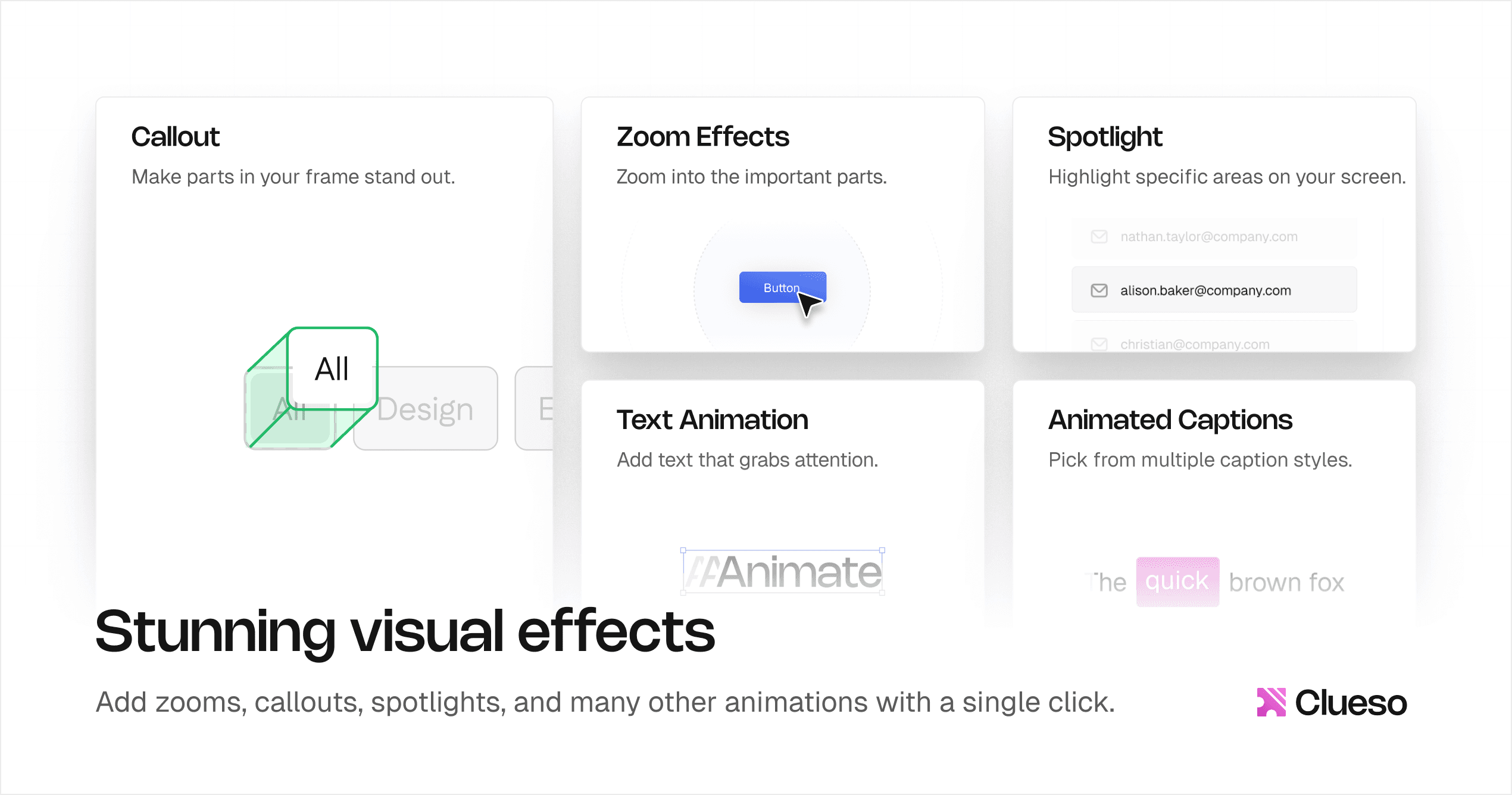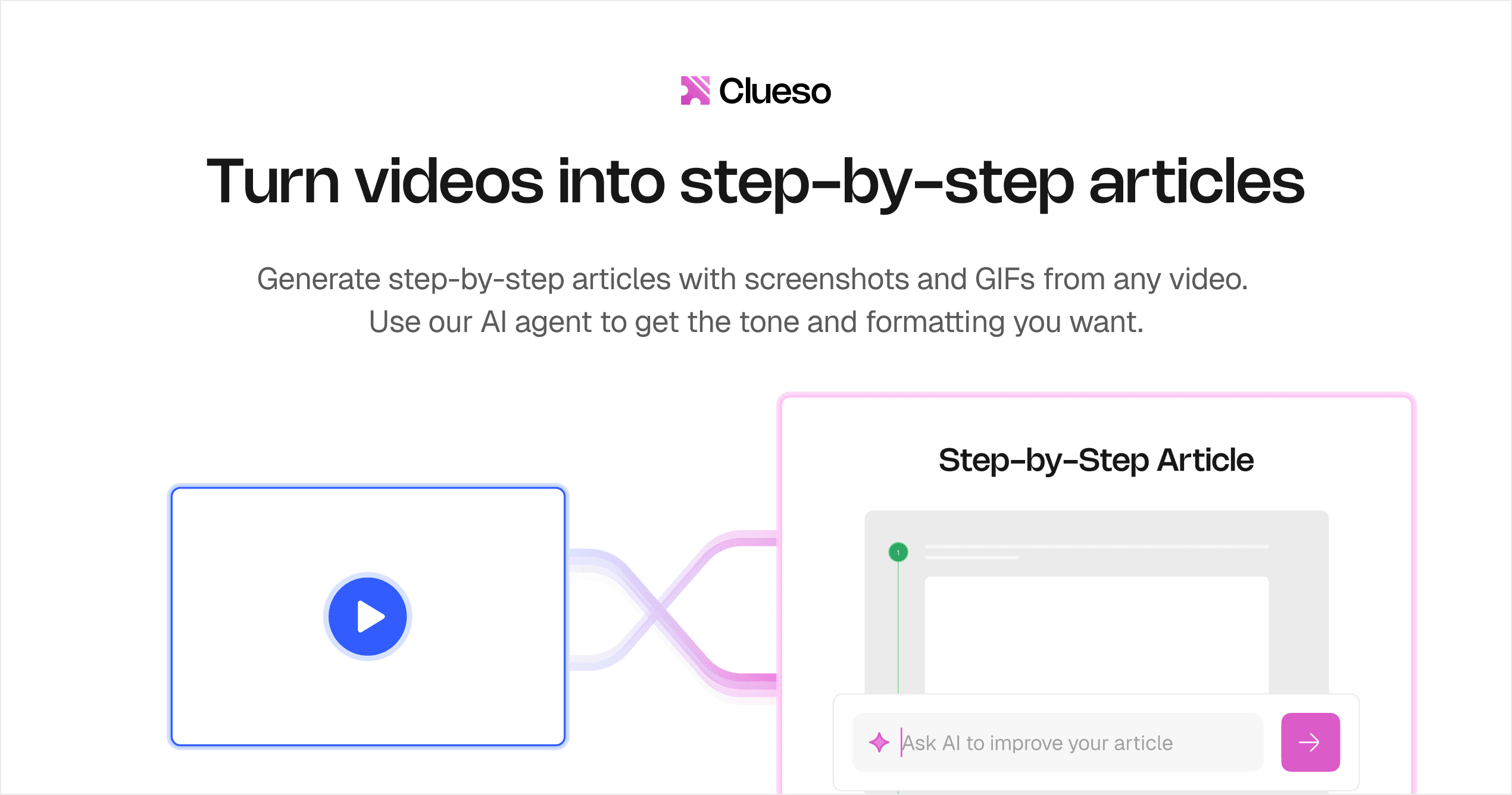How Sales Enablement Helps You Sell What You Just Shipped
Sales teams can’t sell what they don’t understand. Learn how enablement can turn new feature launches into revenue through storytelling, alignment, and assets reps actually use.
Your product is sprinting. But sales is still lacing up.
This is the classic PLG paradox: features launch fast, but frontline teams, especially sales, are always playing catch-up. By the time reps are trained on one release, five more have dropped.
Here’s what that disconnect costs you:
Demos that skip the one thing the prospect actually cares about
Reps selling half-baked stories that cost deals
Launches with zero commercial impact
You can ship the most powerful capability your team has ever built. But if your Sales team doesn’t know how to talk about it, or why it matters, your launch falls flat.
This snowballs into more than just a communication gap; it becomes a compounding GTM failure.
In this post, we’ll show you how to fix it: with a sales enablement strategy that’s designed for high-velocity feature launches. One that doesn’t just keep pace with your product team, but helps your sales team pitch every new release like it’s your next big thing.
What Is Sales Enablement?
Sales enablement is the strategic process of giving your sales team the content, tools, training, and data they need to engage buyers at every touchpoint and close deals more effectively. It sits at the intersection of sales, marketing, and product; making sure reps always have the right information, in the right format, at the right moment.
So, instead of wasting time hunting for decks, guessing which message will land, or figuring out how to position a feature, sales enablement gives reps ready-to-use playbooks, insights, and assets that accelerate conversations and drive predictable revenue. The result is shorter sales cycles, higher win rates, and a more consistent buyer experience.
Why Sales Enablement Is the Missing Link in Feature Launches
The instinct for many GTM teams is to give Sales the what: a list of features, specs, release notes, maybe even a sleek slide deck. But customers don’t buy what; they buy why. Why this feature matters, why now, and why your product is the only one that gets it.
And that translation—from feature to value—is not Sales’ job to figure out. It’s Enablement’s.
As such, Sales enablement is less about handing off a nifty deck or two to Sales and more about storytelling. It turns new features into narratives that reps can sell. It connects product decisions to customer outcomes. When done right, it multiplies the impact of every launch.
Enablement-Led Storytelling Starts Early
In product-led orgs, launches happen fast. Features evolve constantly. But that speed only works if your Sales team is equipped to keep up, and speak with conviction.
That starts before launch day.
To build a story that sells, before you build training or sales collateral, you need early alignment across Product, Sales, Marketing, and RevOps around three core questions:
What are we launching? (What’s new, and what’s changed?)
Why does it matter to our customers? (What pain does it solve, what outcome does it unlock?)
When and how will it go to market? (What’s the rollout plan, and what’s expected of Sales?)
Without this alignment, you’re not enabling a launch. You’re just reacting to it.
The Sales Enablement Strategy for Selling New Features
Now let’s look at how you can build a system that’s fast, flexible, and deeply embedded into how your reps actually sell.
1. Partner Early with Product & CS
Most teams treat enablement like the closing act of a launch. But the best teams loop in Sales enablement at the beginning, right alongside Product and Customer Success.
Early partnership gives sales enablement teams access to:
Beta insights: What are early adopters loving? Where are they getting stuck?
Customer proof points: What pain is this solving in real workflows?
Roadmap context: What’s coming next, and how does this feature ladder into a broader narrative?
What to do:
👉 Attend product sprint reviews or beta debriefs
👉 Set up a shared doc or Slack thread where PMs drop early user reactions
👉 Work with CS to find beta users willing to share quick win quotes or screen recordings
2. Define the Feature’s Value Props by Persona
Not all features matter equally to every buyer.
To drive adoption in live deals, your sales enablement must go beyond generic benefit statements (”It saves time!”; “It boosts revenue!”). You need persona-level clarity. Think in terms of pain relief, efficiency gains, or strategic leverage; then tailor value props accordingly.
For a VP of Ops, how does this reduce friction or improve throughput?
For a Security Lead, what risks does it eliminate or mitigate?
For an end user, how does it simplify their day?
What to do:
👉 Run a quick messaging workshop with PMs, CS, and Sales to map personas to outcomes
👉 Use past call recordings to extract language your customers already use to describe the problem
👉 Create a simple 3x3 grid: Persona × Pains × Outcomes
3. Create the Messaging Kit
Now, package the narrative. Your messaging kit should act like a tactical playbook - clear, punchy, and immediately usable in the field.
Include three core sections:
👉 What it is: A crisp, jargon-free description of the feature.
👉 Why it matters: The business context that makes it relevant.
👉 How it helps: Specific, persona-aligned use cases or proof points.
Don’t forget objection handling. Reps will hear “We already use X” or “This isn’t a priority right now.” Equip them with counters that are consultative, not combative.
4. Deliver Just-in-Time Training
I want 30-slide decks said no Sales Rep ever. They want short videos, quick talk tracks, and examples they can steal.
What to do:
👉 Embed short video walkthroughs into your CRM or sales wiki
👉 Create “deal-stage nudges” inside your enablement platform (e.g., Gong, Highspot, Showpad)
👉 Record peer-led explainers where top reps model how to introduce the new feature on a call
| 📖 Read more: The Definitive List of Training Videos Your Sales Team Needs
5. Build Feedback Loops with the Field
Your launch doesn’t end when the feature ships. In fact, that’s when the real learning begins. Enablement needs constant updates.
What to do:
👉 Spin up a #launch-feedback Slack channel for reps to share objections, reactions, and workarounds
👉 Run “post-call breakdowns” during team huddles to dissect how the feature landed
👉 Collect clips in Gong or Chorus that showcase great pitches or reveal friction
Then, feed those insights back into Product and Marketing to refine positioning and collateral.
Creating Sales Enablement Assets That Actually Get Used
You can build alignment, create the right narrative, and still fall flat—if your assets collect dust in a Google folder. The best enablement assets do three things:
Fit into the sales team’s existing workflow
Deliver value in 30 seconds or less
Are easy to update when the product changes
Here are five high-impact assets that reps will actually use (and reuse):
1. Feature Walkthrough Videos
Short, no-fluff videos that show exactly how the new feature works, and why it matters.
What works:
30–60 second clips of the feature solving a specific task
Flows that match common buyer use cases
Annotated screens that answer “What am I looking at?” in plain language
These videos double up as internal enablement as well as shareable customer content. Reps can easily consume them before a call or drop into an email thread with a prospect.
📌 With a range of visual elements like smart zooms, callout, spotlight, etc. and studio-quality AI voiceovers, Clueso makes it effortless to create polished feature walkthroughs.
2. Competitive Battlecards
New features often mean reps need to reframe the pitch. Equip your team with up-to-date battlecards that go beyond “we have X, they don’t.”
They should explain:
When to bring the feature up
Real deal talk: what competitors say and how to counter
What to say when a prospect says “But Vendor Y already offers that”
3. Customer-Facing PDFs
One-pagers or mini-decks built for the buyer to drive internal alignment. Best-in-class PDFs include:
Visual “before and after” impact
ROI highlights tied to specific roles
Clear, no-jargon benefit statements
💡 Pro Tip
Co-create with your top reps. Their language is already field-tested.
4. Email & Call Scripts
Don’t leave outreach to chance. Sales conversations start well before the first demo. With every feature launch, reps need updated outreach scripts that map the new value to verticals, personas, or common objections, and buyer pain.
What works:
Launch announcement emails (with tight, persona-led hooks)
Cold call openers referencing problems the new feature solves
Discovery and follow-up language that tees up the feature organically
📌 With Clueso, you can generate a help article from the same video recording. You can also translate it in 30+ languages in just a click or use the translation glossary to instruct the AI. It can help reps shape their email and call scripts.
Turn Every Feature Launch Into a Sales Win
Feature launches shouldn’t be left to chance. With the right sales enablement strategy, every new release can become a revenue moment.
The fastest-growing teams are shipping fast and enabling even faster. Sales enablement is equipping reps with messaging, content, and tools that scale across personas, products, and pipelines. Most importantly, it is closing the gap between what Product builds and what Sales actually sells.
That’s where Clueso comes in.
Clueso helps go-to-market teams create, update, and share sales enablement assets fast. One walkthrough becomes a video and a help article. Everything stays up-to-date, lives where reps work, and delivers insights that fuel smarter launches.
Ready to make every feature launch a win? It’s time to put Clueso at the center of your GTM motion.
Start your free trial now!
FAQs About Sales Enablement
What should a sales enablement strategy include?
Sales enablement strategy should align Sales, Product, and CS early, define persona-specific value props, deliver clear messaging kits, provide on-demand training, and build feedback loops from real sales calls.
What are the best formats for sales enablement content?
The best format for sales enablement content are short videos, competitive battlecards, one-pagers, scripts, and demo snippets work best. Reps use content that’s quick to digest and easy to find during the sales process.
What tools support modern sales enablement?
Tools that support modern sales enablement are tools like Clueso, Notion, Slack, and Gong. They help teams create, distribute, and track sales content. Clueso stands out by auto-generating videos, docs, and walkthroughs from one recording.
How can AI improve sales enablement strategy?
AI can improve sales enablement strategy by speeding up content creation, personalizing coaching, surfacing the right assets in real time, and tracking engagement so teams can double down on what works.




